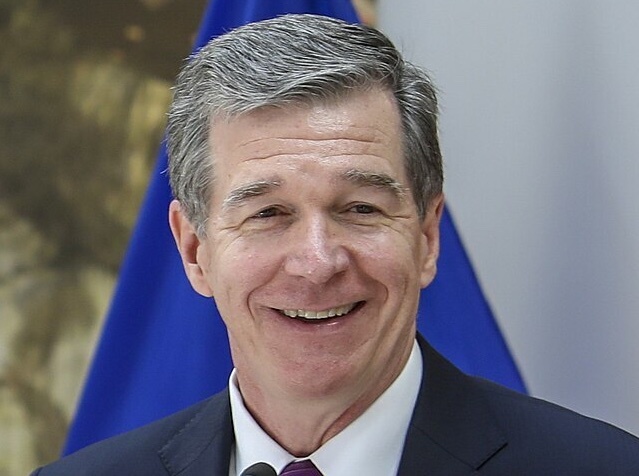On October 25 the North Carolina House and Senate ended a historic and lengthy session. Besides passage of a $30 billion budget, the session included significant education legislation. Let’s take a quick look at some of the most publicized and not-so-publicized education developments in the recent legislative session.
State Budget
The big item in every legislative session is the state budget. This year it was no different. The $29.7 billion General Fund budget authorizes approximately $11.5 billion for K-12 education in 2023-24 and $11.8 billion in 2024-25. Over two years, it amounts to a $795 million increase for the public schools.
Note: For several years, progressives have charged Republican lawmakers with “dismantling” public education in North Carolina. It’s a hard case to make given approval of the thirteenth consecutive budget increasing funding for the public schools. The new budget adds the nearly $800 million to the public schools over two years even as many of those schools have declining enrollments. Since 2012, per-pupil spending increased from $8,436 to $12,345 in 2022.
Pay Raises
The state budget gives teachers an average pay raise of 7 percent over the biennium, ranging from 3.6 percent to 14.7 percent. To finance the raises, the budget allocates $176 million to public schools in the first year and $304 million in the second year of the biennium. It also set the following raises for noninstructional employees in public schools:
- Assistant principals — based on teacher salary schedule, plus 19 percent
- Central office administration — 7 percent over two years
- Principals — 7 percent over two years
- Non-certified personnel — 7 percent over two years
- Bus drivers — 7 percent, plus 2 percent more
- Superintendents — 14.5 percent over two years
Note: The 2023-24 budget marks the tenth consecutive year teachers have received a pay increase. While teacher pay is a perennial issue, the solution to the current problems is not in keeping up with across-the-board increases, but in developing a plan where pay is tied to individual performance, since the current system has no linkage between pay and performance. The Professional Educator Preparation and Standards Commission (PEPSC) is one entity designed to help address some of those problems. Earlier this year PEPSC approved an alternative pay and teacher advancement plan it hopes to start piloting in districts next year.
Lottery Funding
Allocations for the North Carolina Education Lottery Fund include $931 million in 2023-24 and $935 million in 2024-25. Here is how those funds will be used:
- $386 million — Noninstructional support personnel
- $78 million — Pre-K programs
- $100 million — Public school building capital fund
- $254 million — Needs-Based Public School Capital Fund (interest-bearing, nonreverting funds)
- $50 million — Public school repair and renovation
- $41 million — Scholarship Reserve Fund
- $21 million — Local education agency transportation
Note: The North Carolina Education Lottery takes in almost $4.3 billion annually. Only about a quarter of that — about $1 billion — ever finds its way to our schools, much less actually gets into the classrooms. The bulk of lottery money goes to prizes, administrative costs, and advertising. Unfortunately, the remaining lottery funds essentially function as a legislative cookie jar where every year lawmakers divvy up proceeds based on which area of education they think deserves or needs the money most, without regard to classroom expenses. This problem could be resolved once and for all by putting in statute specific areas where lottery monies will be directed —and keeping it that way.
Teacher Pipeline
Reliable data on teacher vacancies and attrition are often difficult to find and interpret (see here and here). The conflicting nature of the data suggests measured steps are needed to address issues of teacher supply. Lawmakers took several steps in the last session to help remedy issues in the teacher pipeline.
Teacher Apprenticeship Grant Program — $1 million is allocated to a new Teacher Apprenticeship Grant Program that will provide funds for teacher apprentices to cover tuition and salary supplements to help them become teachers.
Teacher Assistant Program — An additional $575,000 is allocated to the Teacher Assistant Program, which provides financial assistance for teacher assistants enrolled in coursework for a teaching license. The changes bring the total budget for the Teacher Assistant Program to $875,815.
National Board for Professional Teaching Standards — $1 million is allocated each year of the biennium to reimburse teachers pursuing National Board for Professional Teaching Standards (NBPTS) certification.
Renewable Limited Teacher Licenses — The budget bill creates a three-year renewable license for individuals who meet limited licensure requirements. Previously the limited teacher license was nonrenewable.
Out-of-State Teacher License Reciprocity — Requires the State Board of Education to grant a license to a teacher licensed in another state with substantially similar licensure requirements to North Carolina’s if the teacher has at least three years of teaching experience and is in good standing with the licensing state.
Note: Teacher shortages are more a function of individual locale than statewide. These initiatives give local schools a variety of options to help address the lack of teachers. If successful, these initiatives can be expanded. They are good first steps.
Student and School Safety
Lawmakers made the following changes concerning school safety:
- Searches of Students. All searches of students performed by school officials must be narrowly invasive and be conducted by one school official and one adult witness of the same sex as the student.
- Safety Grants. Provide grants to school districts: $25 million in 2023-24 to support students in crisis, school safety training, and the purchase of safety equipment in school districts.
Equity in Testing
Legislation allows home schoolers to take Preliminary SAT/National Merit Scholarship Qualifying Test (PSAT/NMSQT) as well as exams for advanced course credit or course tests offered at the local school district. The change levels the playing field between public school students and home schoolers.
Other Major Education Legislation
Parents’ Bill of Rights. This legislation delineates parental rights and ends practices that limit or diminish parental authority. It affirms parental rights to make decisions regarding their child’s medical and psychological well-being. The legislation requires that, at the beginning of the school year, each parent be notified of the health care services offered at their child’s school and the means for the parent to provide consent for any specific service year. In addition, it also requires parental notification regarding medical and psychological services provided by the school and upholds the rights of parents to opt out of surveys or data collection. Finally the legislation also prohibits instruction in gender identity, sexuality, or sexual activity in kindergarten through fourth grade.
Opportunity Scholarship expansion. This legislation lifts the income cap on the Opportunity Scholarship Program. Depending on household income, eligible recipients can now receive a voucher of up to $7,400 to attend a private school. Higher-income households will receive discounted vouchers of either 90 percent, 60 percent, or 45 percent of full eligibility (families with greater household incomes will receive progressively lower voucher awards).
Charter school changes. This legislation creates a Charter School Review Board to approve or decline charter school applications. The North Carolina State Board of Education, which used to be tasked with charter school approvals, now is the review board for appeals of the new board’s decisions. The legislation prohibits the review board from considering any alleged impact on the local school administrative unit or units served by the charter school when deciding whether to grant, renew, amend, or terminate a charter.
Sex Issues and Education
Fairness in Women’s Sports Act. This act requires each public school team that participates in middle and high school interscholastic and intramural athletic activities to be expressly designated by the biological sex of team participants. It prohibits students who are biological males from participating on teams that are designated for females. The act became law over the governor’s veto.
Prohibiting gender transition procedures for minors. This bill prohibits medical professionals from performing surgical gender transitioning procedures on a minor or from prescribing, providing, or dispensing puberty-blocking drugs or cross-sex hormones to a minor. It also prohibits state funds from being used directly or indirectly for such procedures to a minor or from supporting the administration of any health plan or government-offered insurance policy that offers such procedures to a minor.
Protect Our Students Act. This act increases the penalties for school personnel who commit sex offenses against a minor. It also mandates that certain school employees convicted of certain felonies involving a student must forfeit a portion of their state-mandated retirement benefits. The act also requires public schools to show students in grades 6–12 videos by the Center for Safer Schools about sex abuse.
Special Appropriations
Almost $75 million in “Special Appropriations” (see “General Government,” Section F, beginning with page F 40) are set aside for various projects, the majority of which are capital improvement to athletic fields, equipment for athletic training facilities, and locker room renovations.
Note: The growing number of special appropriations from special reserves signifies a disturbing trend. Lawmakers use special appropriations and the special reserves (such as the Regional Economic Development Reserve) to make it appear as if they are holding the line on General Fund spending. Special appropriations are usually doled out as favors to colleagues or to others to garner votes for legislation. The growing list of special appropriations projects is bad policy. The best way to end these outcomes is more transparency.


